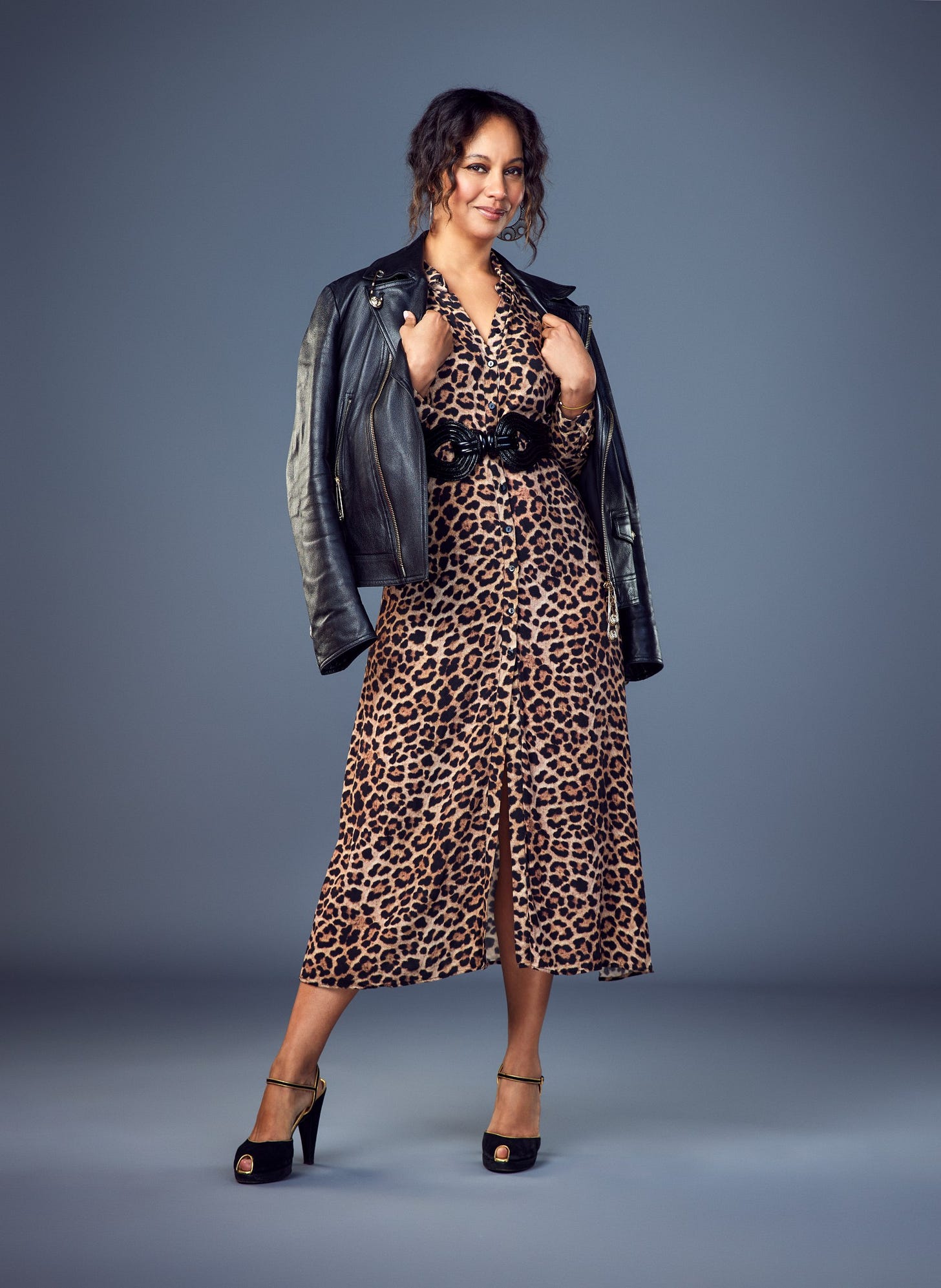Something called No Buy 25 is trending at the moment, particularly in the US, (limbering up for those tariffs, no doubt). It’s been covered by the Wall Street Journal, the Washington Post and yesterday hit London’s The Times. Searches for “no buy challenge” and “no spend challenge” are up 40 per cent, according to Google. It’s even got a trend name: “underconsumption core”. My friend Lesley Thomas has been an on/off ‘No Buy’ fan since 2013, or intermittent fashion fasting as she calls it; I’ve edited an extract of her Times piece below, (read the full thing here).
All this is good stuff - good because of course we have far too much stuff, as every Rule of 5 poll tells me. In last month’s poll, 49% of you said you were sick of your own over consumption, 25% said we were doing it to save the planet, and 13% to save money.

What is clear, is we are are drowning in stuff. I share my house with four people, and came home from a few days away last week to find stuff (clothes, mostly) piled up on stair treads, flung over sofas and chairs, spilling out of laundry baskets and exploding in heaps on bannisters. It’s so depressing. (OK, Mum went mad).
I spent yesterday with an enlightened brand Groundtruth who are trying to solve our plastic problem by recycling post consumer plastic waste into luggage. I’ll tell you more about this next week over on It’s Not Sustainable,
but the facts Groundtruth shared, along with a scientist from the Zoological Society of London, are chilling. Only 9% of plastic ever made is recycled. Microplastics are everywhere from the Antarctic ice sheet to your mother’s breast milk. Rivers, seas and oceans are clogged with the stuff, and as the licenses for new oil and gas fields are opened up, plastic use is set to double in the next 10 years. The world cannot afford this.
Over 60% of clothing is made of plastic - synthetic fibres like Nylon, Lycra, Goretex, acrylic, polyester. Even your organic cotton t shirt has polyester in it - most likely the thread used to stitch the seams will be polyester because it is stronger and more durable. You don’t have to declare that on the label to claim a 100% cotton product. (Ask the brand - the good ones will tell you if their stitching thread is cotton. If it’s a volume brand you can forget it. They won’t even get back to you).
So with all this in mind, should we just buy nothing?
Firstly - obviously - that’s not sustainable. If we all did it, businesses would collapse, we would disappear into the hole in the middle of Kate Raworth’s economic doughnut. That aside, consumers can’t live on nothing forever. We could probably go a long time on what we currently have, but after a while things tend to wear out. Active wear is the first to go - last week one very dedicated follower admitted to me she was beginning to smell. “Buy replacement sports kit!” I told her immediately. No one wants health, wellness and general hygiene to suffer. Last year, my second year of Rule of Five, I did not include active wear in my final count. I bought new trainers, (AllBirds), new (plastic free) outerwear (Mover), and Community Clothing 100% cotton running gear, (stitched with cotton, no elastic in the waistbands, quite remarkable).
Ditto underwear, tight and socks. As long as we don’t binge on these items and just buy what we need, these are daily essentials and I don’t think they count in your five.
What Rule of Five teaches you is moderation. You still get 360 days of shopping fasting, but you learn to plot your five purchases cleverly and intentionally. The joy of shopping, as it should be done, is relearned. Here’s how:
Firstly, identifying what you really need, and what you desire the most, and where those two things converge. If you like it, that’s not enough. You have to LOVE it. If you already have it (and you probably do, in some form), forget it.
Secondly, spending time researching the best option. Trying lots on to ensure you make the best choice in the market is fun. My checklist is biodegradable fabric, (a must), good fit, does it suit me, is it an independent brand, do I know its supply chain and work force, is the money I am handing over going into a good system that promotes better working conditions and responsible manufacturing. This process has allowed me to discover so many new brands and designers who are making collections that are genuinely doing good in the world. This is a much more wholesome use of time than mindlessly scrolling Instagram, or default shopping on zara.com looking for a cheap knock off.
Thirdly, a 14 day cooling off period always reveals the true answer to, do I really want this, or am I just being manipulated? (To understand more about the manipulative digital marketing techniques used on you every day, watch Netflix’s Buy Now, The Shopping Conspiracy).
Fourthly, thinking very intentionally about your style and how it is evolving. One of the great joys of fashion is how it changes, and how we change. Dresses and heel heights I obsessed over five years ago have no interest for me now - I’m in my androgynous period, with an extremely well cut and oversized blazer, (Margaret Howell), tailored pants (Another Tomorrow; Mother of Pearl), and a new line in local knitwear that should see me to the end of days (Navygrey; Herd).
Finally, experiencing the joy of acquiring something you have thought long and carefully about it. Treasuring that item now you have it, and forming a long term relationship with it. Knowing you will care for it, mend it, hang it, enjoy it for many years to come. Dreaming up the myriad ways you can wear it with items you already have. The ten new things I have bought in the last two years I adore, and are very meaningful to me.
Alongside this I have learned the art of mending (or at least the people I can take my clothes and shoes to when they need mending), the creative fun of upcycling, building a habit of renting and borrowing for occasion wear, the salvation of charity shops, and the traps of online second hand sites (often what you buy doesn’t fit, but you can’t return second hand online).
Going cold turkey is very much part of the Rule of Five challenge, turning off the taps on over consumption is a must. But alongside that you can re-learn the skill of shopping and that way you will really hone your style.
Here is Lesley’s piece on how to be an intermittent fashion faster, abridged from The Times. Let me know how you’re getting on so far this year.
No-buy 2025: What I learnt when I quit shopping
When I was a teenager, way back in the last century, the things that were “trending” had names like Levi’s 501s, ra-ra skirts and Rubik’s Cubes. Now, thanks to the internet, absolutely anything can be turned into a trend — a cost of living crisis or being a bit skint after a divorce.
I had a no-buy 2013, a no-buy 2020 (everyone joined in that year, as it turned out) and another shopping detox in 2022.
The first time I did it, new to single motherhood and unshared costs of living, I had to make some big budget cuts. I found it easier to close entire departments than trim from here and there — so my fashion budget disappeared. To enforce the rule properly, I allowed myself no grey areas or wiggle room — no jewellery, no tights, no lingerie, not even second-hand clothes were allowed. It was a strict, year-long crash diet. It was hard, particularly in the first couple of months — clothes have been an indulgence from the moment I got my first Saturday job at 15. It could be the convent-school girl in me, but I grew to love this limited asceticism after a while.
I saved money, of course, but there were many other benefits. I saved time as I spent fewer hours fashion scrolling — something I came to understand I did when bored or sad. I dropped a few pounds — getting into old clothes was a great incentive to spend more time at Fitness First. I think I even dressed better. I certainly got more compliments on my outfits. Raiding the back of the wardrobe I found “vintage” treasures that led me back to my own style, rather than following fashion, even unconsciously. I realised that what I like wearing (essentially: jeans of all shapes, shirts, pencil skirts and tailored trousers for work) is different from what I enjoy buying (party frocks, so very many of them, and jackets for some reason).
I was spending money on a version of me that did not really exist — or at least very rarely gets an outing. After the first no-buy year, I became a better, more considered clothes shopper. I bought less, and I bought better quality. Cutting back has not got in the way of my fashion joy — quite the opposite. I treasure what I’ve got and I am more sure of what I really like. I do slip into my old ways, so I’ve had three no-buy years now. I like the reset and I’ll probably do it again. I am an intermittent fashion faster for life.
I won’t pretend that I was thinking about the unsustainability of my clothes habit when I first did the detox, but I quickly became aware of the waste, finding blouses in drawers that I’d bought and forgotten about, still bearing the swing ticket, or discovering that I had more white T-shirts than anyone could ever need. This would never happen now
I definitely still buy high street, but it’s limited: I am a bit too familiar with H&M’s offerings, simply because there’s a store close to my home; and I like Cos and Uniqlo for the quality of their basics. But I now know that the clothes I keep coming back to are the well-made, non-“trend” ones I paid more for. I have skirts I can probably wear for ever — as long as I keep going to the gym.
I’d highly recommend a shopping detox, especially if it’s clothes. Most of us don’t need any more stuff. There’s enough of it already in existence, especially clothes. And if you’re past 40, there’s nothing in your wardrobe that won’t come back in style at some point. This is the third time in my life that kilts have been in. I’m still waiting for ra-ra skirts to come back, though.




